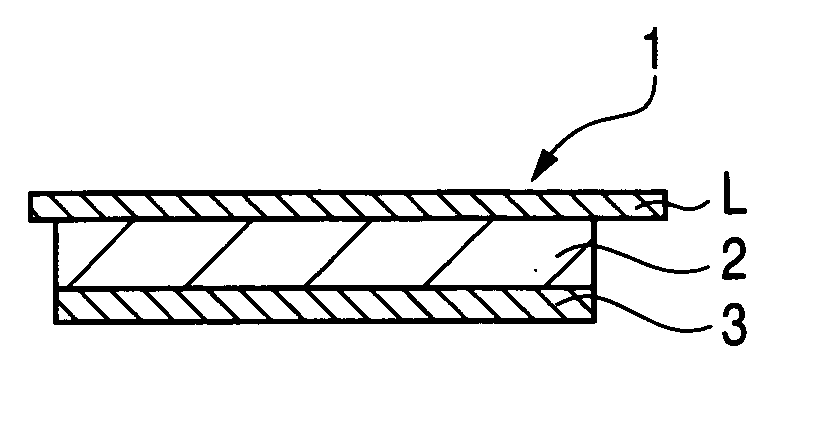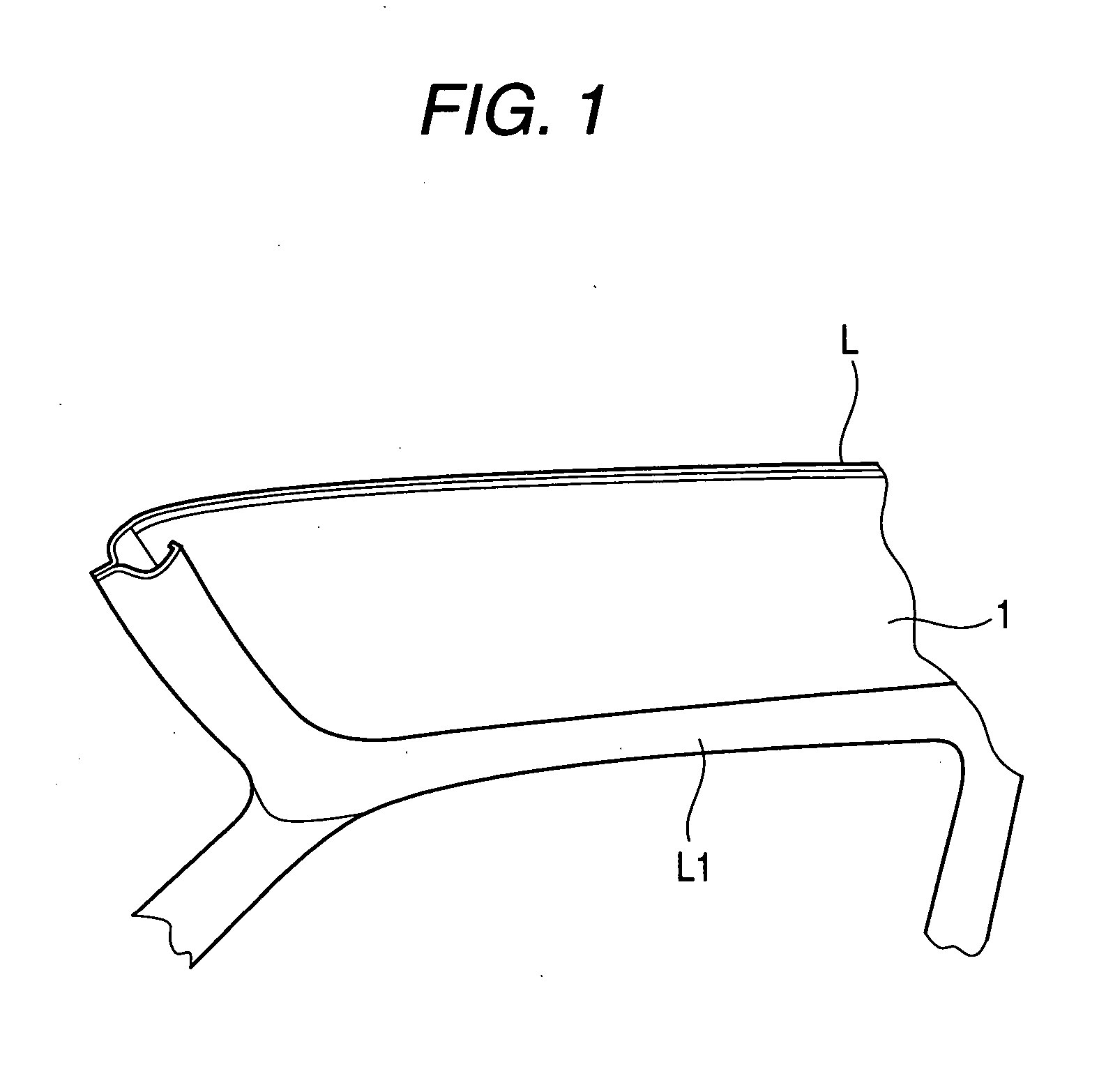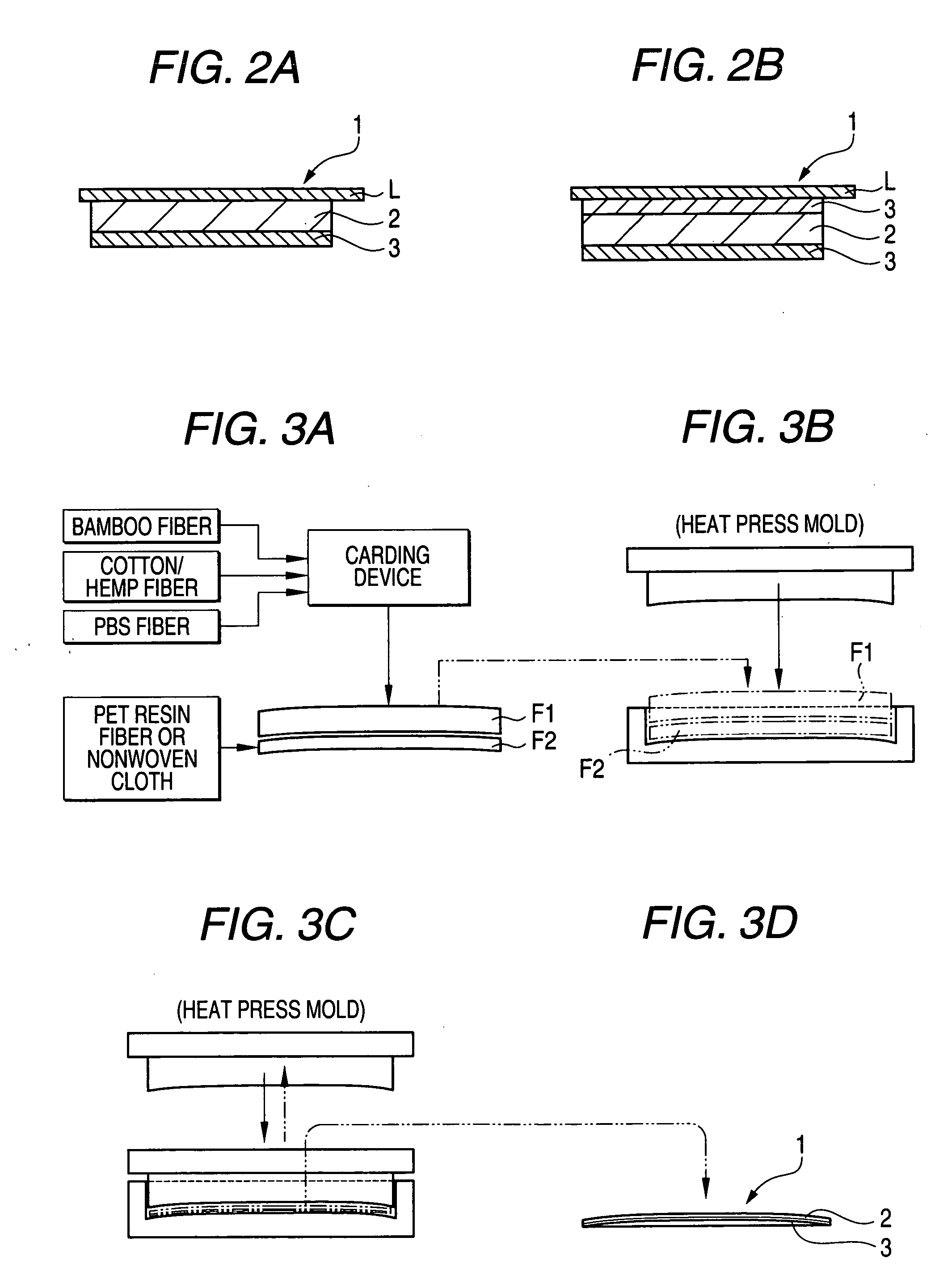Automobile interior board and method of producing automobile interior board
- Summary
- Abstract
- Description
- Claims
- Application Information
AI Technical Summary
Benefits of technology
Problems solved by technology
Method used
Image
Examples
example 1
[0052] Using the steps of FIGS. 3A to 3D, inventive fiber-complexed resin products were produced under the following conditions (1) to (6). [0053] (1) Used clothing woven by cotton or hemp is fiberized by a fiberizer. [0054] (2) Bamboo is fiberized by a fiberizer. [0055] (3) Using a blender, a card and a layer, the aforementioned fibers and PBS resin fiber are blended to form a bulky felt having a predetermined thickness. [0056] PBS resin fiber: GS P1a, produced by Mitsubishi Chemical Corporation; grade: AZ71T; diameter: 5.5 dtex; length: 2 inch [0057] Length of bamboo fiber: 20 to 130 mm; diameter: 50 to 500 μm
Bamboo fiber:cotton and hemp fiber:PBS resin fiber=30:20:50 (wt-%) [0058] (4) A nonwoven cloth of recycled PET fiber is laminated on one surface of the bulky felt. Using a heat press, the laminate is heat-pressed, and then cooled. Press condition: 130° C., 2 min., pressure: 3 MPa [0059] (5) PBS resin is biodegradable and hydrolyzable but is not desirable as product. Thus, PB...
example 2
[0061] Using the steps of FIGS. 3A to 3D, inventive fiber-complexed resin products were produced under the following conditions (1) to (6). [0062] (1) Used clothing woven by cotton or hemp is fiberized by a fiberizer. [0063] (2) Bamboo is fiberized by a fiberizer. [0064] (3) Using a blender, a card and a layer, the aforementioned fibers and PBS resin fiber are blended to form a bulky felt having a predetermined thickness. [0065] PBS resin fiber: GS P1a, produced by Mitsubishi Chemical Corporation; grade: GZ95T (containing talc as filler); diameter: 5.5 dtex; length: 2 inch [0066] Length of bamboo fiber: 20 to 130 mm; diameter: 50 to 500 μm
Bamboo fiber:cotton and hemp fiber:PBS resin fiber=50:10:40 (wt-%) [0067] (4) A woven hemp cloth is laminated on one surface of the bulky felt. Using a heat press, the laminate is heat-pressed, and then cooled. Press condition: 130° C., 2 min., pressure: 3 MPa [0068] (5) PBS resin is biodegradable and hydrolyzable but is not desirable as product. ...
PUM
| Property | Measurement | Unit |
|---|---|---|
| Thickness | aaaaa | aaaaa |
| Adhesion strength | aaaaa | aaaaa |
| Biodegradability | aaaaa | aaaaa |
Abstract
Description
Claims
Application Information
 Login to View More
Login to View More - R&D
- Intellectual Property
- Life Sciences
- Materials
- Tech Scout
- Unparalleled Data Quality
- Higher Quality Content
- 60% Fewer Hallucinations
Browse by: Latest US Patents, China's latest patents, Technical Efficacy Thesaurus, Application Domain, Technology Topic, Popular Technical Reports.
© 2025 PatSnap. All rights reserved.Legal|Privacy policy|Modern Slavery Act Transparency Statement|Sitemap|About US| Contact US: help@patsnap.com



